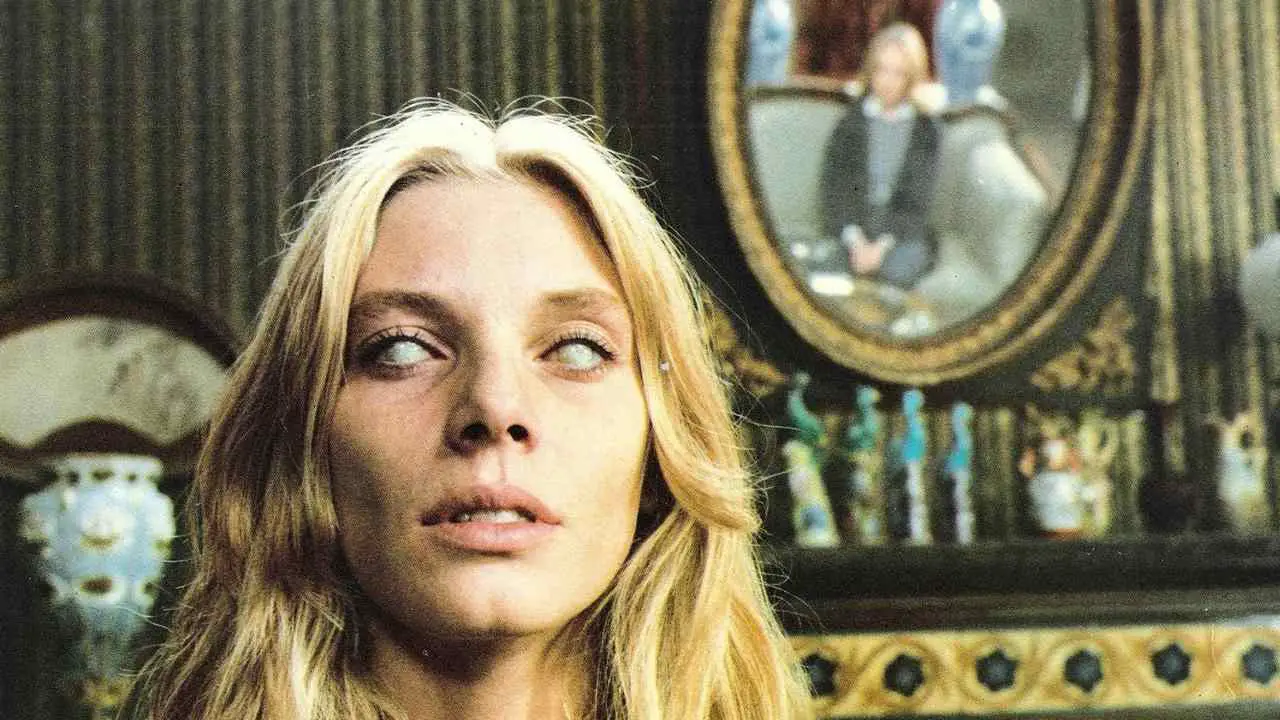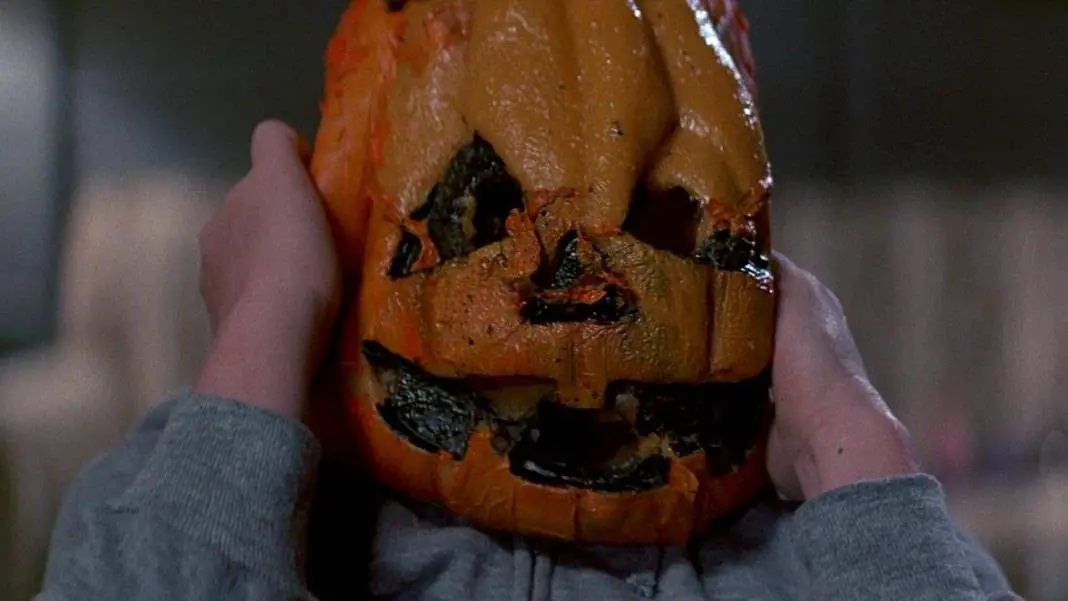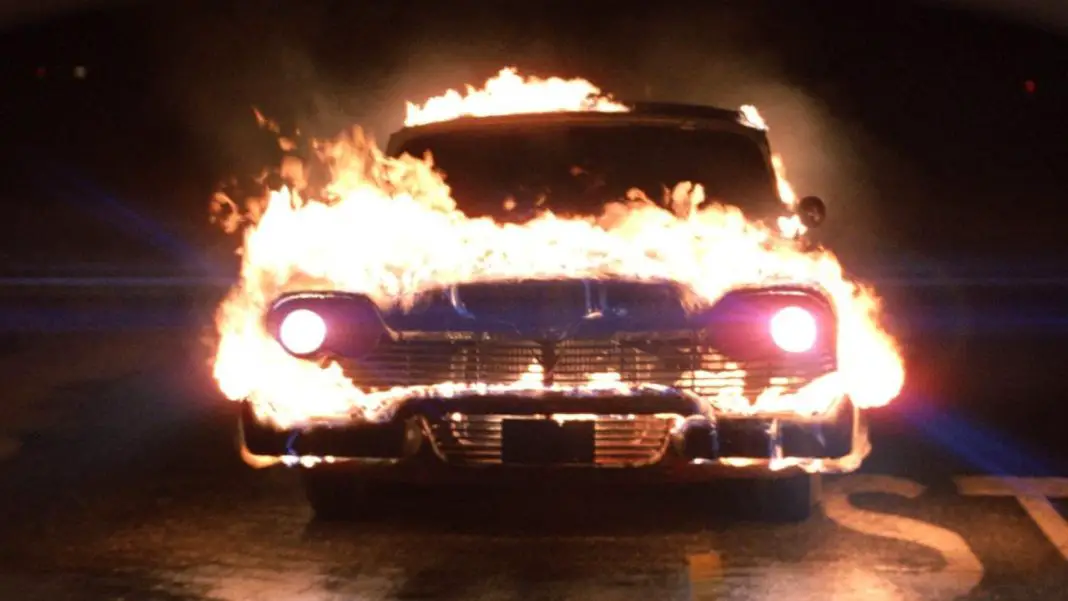Welcome to Back to the ’80s. This recurring feature aims to take a look at the good, the bad, and the ugly from horror’s most beloved decade. Regardless of which category a particular film falls under, this segment will spotlight films that horror fans can appreciate for one reason or another. We will look at how some of these flicks have stood the test of time and others have not aged quite so well. Regardless of what they look like today, these efforts from the 1980s laid the groundwork for the horror genre as we know it today. In this installment, we will be taking a look at Dario Argento’s Inferno.
Dario Argento’s Inferno is the second film in the Three Mothers trilogy. The first entry is Argento’s 1977 masterpiece Suspiria. While not originally conceived as a trilogy, the three pictures in the series are each linked by one of the aforementioned “mothers” or witches. Inferno follows new characters and different settings; however, thematic elements reveal the 1980 feature as an almost spiritual sequel to Suspiria. The colors, music, and overall suspenseful atmosphere stylistically link the two films. The trilogy concluded over two decades later with Mother of Tears. During its initial release, Inferno was overlooked by American audiences. But in the years since, it has become retrospectively regarded as one of Argento’s best works.
Rose Elliot (Irene Miracle) is an inquisitive poet living in New York City. Her curiosity leads her to a book detailing the history of a coven known as “The Three Mothers.” Rose begins to investigate her own apartment building after recognizing clues that the structure possibly belongs to one of the mothers. As her fixation on the witches dissolves into fear, Rose reaches out to her brother Mark (Leigh McCloskey) for help. Meanwhile, Mark is studying abroad in Italy. After his own strange experience, he heads to New York to reconnect with his sister.
Related: Back to the ’80s: Dario Argento’s Phenomena
Opening the film is a narration revealing the story’s context. This narration gives the audience the impression that they are entering into a dark fairytale. At the same time, this voiceover answers some of the lingering questions from Suspiria. The viewer follows Rose’s initial intrigue of the Three Mothers and is guided through one of Argento’s finest introduction sequences. Rose is compelled down into the cellar of her apartment building. Once there, she comes upon a narrow opening in the floor leading into a grand underwater ballroom. After a cringe-worthy moment where Rose drops her keys into the pool, the audience is torn between wanting to know what is down there and screaming for Rose not to go in.
These moments are characteristic of Argento’s style. Strange passageways and hidden rooms are to be found in the majority of the director’s work. In Opera (1987), Betty (Cristina Marsillach) finds herself escaping through her building’s air-conditioning vents and Jennifer (Jennifer Connelly) inadvertently stumbles into an underground torture chamber after following a telephone cord in Phenomena (1985). The underwater ballroom is only the first of Inferno’s hidden secrets within the main building. Often, these passages seem arbitrarily added in Argento’s work; however, they offer a fun layer of mystery for the viewer.
The introduction also reveals the first of many surreal images in Inferno. Another trademark of Argento, each scene appears incredibly dreamlike and unreal. The vibrant Technicolor homage is thematically continued from Suspiria. In fact, Argento has completely found his groove with this style in Inferno. The colors are hypnotic and are utilized to sedate the viewer before turning into nightmarish situations for the main characters. The audience is satiated by what this experience makes him or her feel as the narrative is often incredibly thin in an Argento flick. The director does provide a cathartic experience; however, this release is closer to the sensation of jolting awake after a fragmented nightmare rather than inspiration from a character’s completed journey.
Characters are, of course, important to the overall feature. The acting in Argento’s work is frequently misunderstood because the main characters are typically disjointed from a normal reality. Still, the main cast in Inferno fulfills their purpose. As a whole, they never come together as an ensemble; however, working independently they each succeed in generating a thrilling experience. Irene Miracle does not have an abundance of dialogue as Rose. She does, luckily, conjure enough presence and vulnerability that we become invested in her curiosity. As Mark, Leigh McCloskey finds the right balance of confidence and confusion. He strives to be the hero but soon discovers he is in way over his head.
Also See: A Beginner’s Guide to Dario Argento
As siblings, the two leads do a sufficient job of portraying the “normal” people accidentally landing in the strange world Argento has created. Meanwhile, the supporting cast are handed the more interesting roles to play. Sacha Pitoeff is a cantankerous bookstore owner feeling overwhelmed by the neighborhood feline population. Unfortunately, he learns a painful lesson that cats are a better alternative to rats. Eleonora Giorgi maintains a successful level of suspense while temporarily taking over the movie’s action. The Nurse (Veronica Lazar) and Professor Arnold (Feodor Chaliapin) are an effectively bizarre duo with a few powerful secrets of their own.
Two recurring Argento “company members” make an appearance. Alida Valli portrays a malicious and greedy concierge. While not as potent as her unrelated role in Suspiria, Valli is still given a few scenes to chew on. And, in addition to being his former real-life partner and co-creator of Suspiria, Daria Nicolodi appears as Elise De Longvalle Adler. Ever the chameleon, Nicolodi always shows up completely new and fresh. Her repertoire as an actress for Argento has revealed everything from an aggressive villain to a carefree assistant. As Elise (which is one of my favorite of the actress’ performances), she evokes a certain pathos and refined delicateness.
Also See: Script to Pieces: Argento and Nicolodi’s Mother of Tears
Ultimately, all of the performances take a backseat to the overall horror and thrills of Dario Argento’s Inferno. Perhaps, not as realistic as one would find in the assemblage of today’s horror; however, Argento is rarely unable to discover original and inventive ways to scare the audience. At least, during this time period. Suspiria did have a particular shock quality that is missing in Inferno. Nevertheless, Inferno brings to the table a more flattering essence of Suspiria’s style. What Argento discovered in the former piece is now refined by Inferno. He builds upon his work to create sequences in the sequel that are as cohesive as they are horrifying.
Some of the more memorable moments include a rat-infested sewer opening, a claustrophobic cat-attack, and an ill-advised trip below an Italian library. Like the ingredients from a witch’s potion, Argento uses the lighting in combination with an operatic soundtrack to generate a grand and ominous atmosphere. The director amplifies the tension he realized in Suspiria by combining all of these elements with a more seasoned vision. While neither subsequent film in the Three Mothers trilogy is as revered as Suspiria, Inferno deserves to be recognized as one of the better entries in 1980’s horror. And, certainly in Argento’s catalogue.
Even as a sequel, Inferno delivers a style one can only find from the 1980s. A style that is lacking in contemporary horror. In particular, the works of Argento from this time do not seek to be realistic in their delivery, but instead, focus on the artistic possibilities of horror. As though one is falling under a witch’s spell, Inferno catches the viewer by manipulating his or her senses. The music is utilized to bombard the audience with operatic warnings while the colors help to subdue one into a false sense of relaxation. Argento builds Inferno piece by piece using all the best of his trademark elements. This film follows a nontraditional path as far as sequels go, but the ride is certainly worth it. Slowly but surely, Dario Argento’s Inferno is becoming rightfully remembered as one of the best the 1980’s had to offer to horror audiences.






